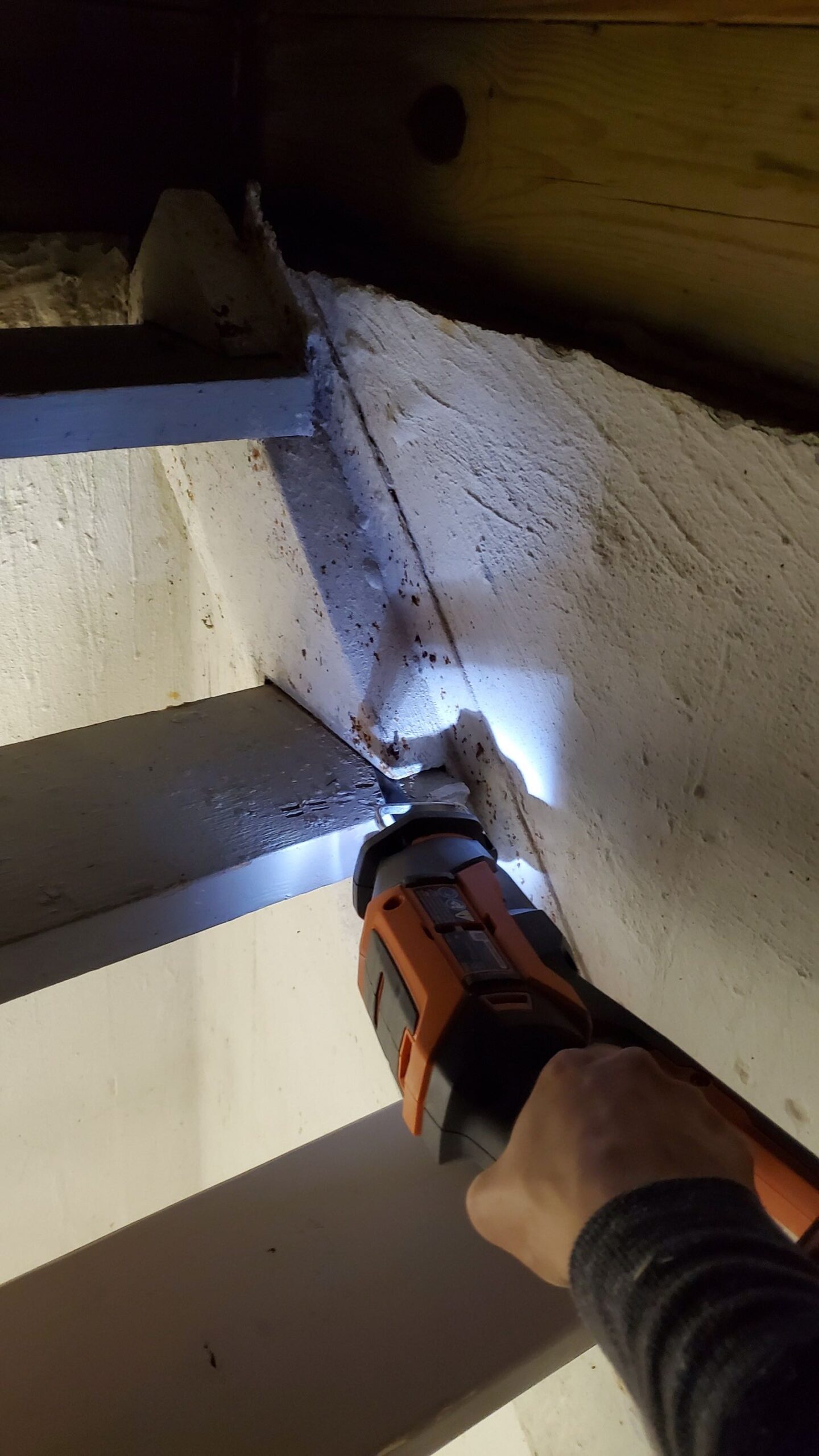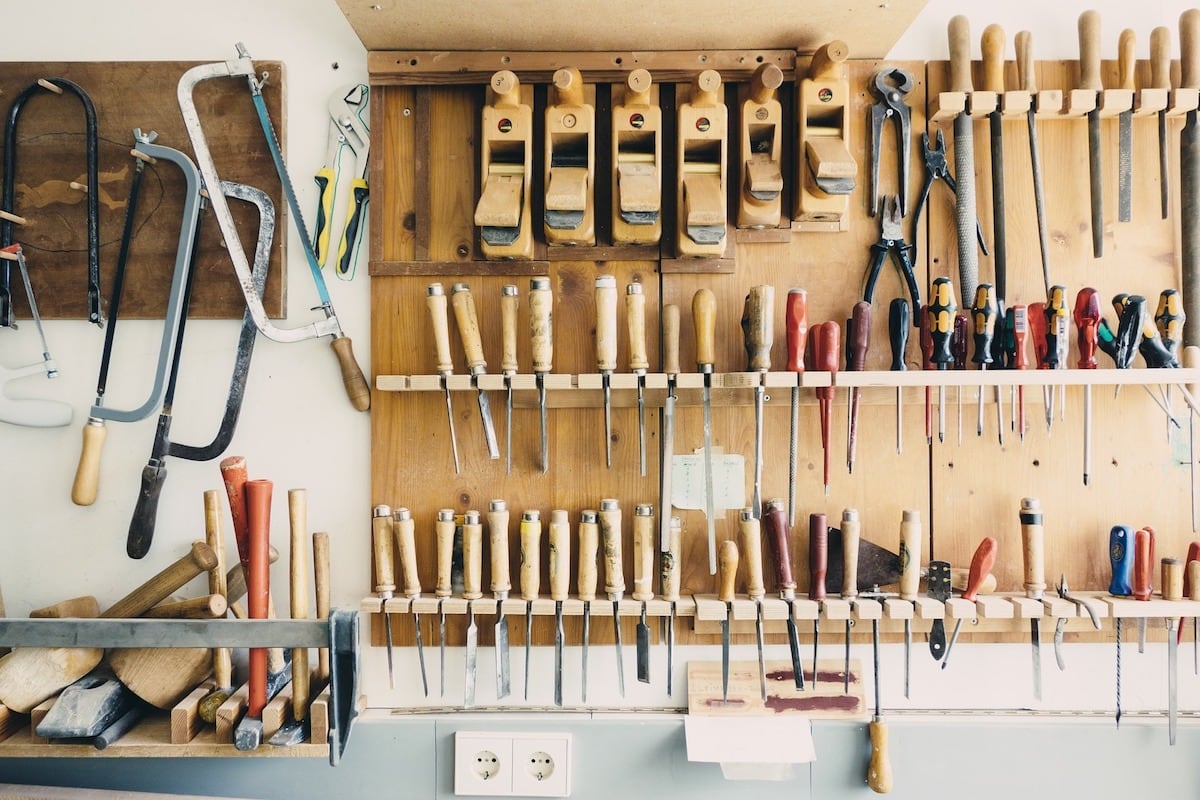5 Reasons Why You Need a Reciprocating Saw in Your DIY Toolbox
This post is sponsored by The Home Depot and is part of The Home Depot PROspective Tool Review Program.
One of the very first tools that I ever owned was a reciprocating saw, but I’ll be honest with you: I didn’t know what it was, and I didn’t think I would ever need it. This was back in 2014 when I had attended my first blogging conference and a tool company was giving out tools like breath mints on a conference table (“You get a power tool! You get a power tool!”)
Over the years, though, as I learned how to do more projects around the house, it became apparent that the reciprocating saw is definitely a tool you need in your DIY toolbox (the other 5 starter power tools I recommend for your toolbox are: a jigsaw, power drill, circular saw, brad nailer, and a sander).
Later I plan to do a more thorough tutorial on how to use a reciprocating saw, but this post is about highlighting the reasons why you should be looking to cop one.
As part of The Home Depot ProSpective tools review program, I was lucky enough my hands on this RIDGID OCTANE Brushless One-Handed Reciprocating Saw. I tested it out in a couple of scenarios around the house, which I’ll show you below. But I’m going to share with you 5 reasons why I think you need to add this tool to your toolbox.
5 Reasons You Need a Reciprocating Saw in Your DIY Toolbox
I’m sure there are more than 5 reasons, but from my experience, I’ll share with you my top 5 reasons why a reciprocating saw comes in handy and why you should be adding one to your tools collection.
Reason #1: It Cuts Through Stubborn Nails and Screws
A couple months ago I did walkout basement makeover, which involved removing the old dilapidated 2 x 8 boards from the metal stringers and replacing them with fresh 2 x 8 boards. Most of the nails holding in the old boards can out with little prodding with a hammer, but I could not for the life of me get out a couple of the rusted nails holding some of the boards in place.
I tried cutting the wood in half….then realized that wasn’t going to free the wood. I needed to cut the nails!
Instead, I could slip the reciprocating blade in between the stringer and the 2 x 8 and cut the rusty nail, releasing the board from the stringer. There was literally no other tool that would have allowed me to do it so cleanly.
There will be times when you simply need to cut a nail or a screw in an awkward location. And the reciprocating saw is the one that can handle the job.
If you’re someone that likes to use pallet wood, having a reciprocating saw like this makes breaking down a pallet pretty easy, too.
Reason #2: You Can Cut One-Handed
Not all reciprocating saws are the same. Previous ones I have owned required two hands to operate for safety and control. But the RIDGID OCTANE Brushless One-Handed Reciprocating Saw was designed to work with just one hand. Of course, you can always use two hands if you want (most times I do, simply out of good practice and habit). But you don’t have to with this saw (see how I used two hands above when cutting the pallet).
That may not seem like a big deal, but with DIY projects and in the trades, sometimes your hands are holding something up…or holding something together…so you might only have one hand available. With this saw, it is specifically designed to work with just one hand.
Reason #3: It Easily Cuts 2 x 4s and Thicker Wood
As you can see above, this reciprocating saw easily sliced through a 2 x 8. But it can cut many thicknesses of wood. In construction, for interior wall partitions, 2 x 4s are used. If you ever need to cut and replace a stud due to damage, a reciprocating saw works perfectly well. It allows you to get into a tight space (studs are usually 16″ on center, so there’s not much space for getting larger cutting tools into those spaces).
Reason #4: It’s the Perfect Demolition Tool
Reciprocating saws are not saws used for precision cuts when you need the wood to look nice and pretty. If you want to make furniture, you’re not going to pull out a reciprocating saw and say, “Hey, let me just cut this piece of plywood to size.” People in the trades know this, of course, but if you’re a newbie and are new to identifying which blade to use for which project, just know that a reciprocating saw = demolition and rough cuts.
Also, this kind of relates to “Reason #1” in that a reciprocating saw can easily cut through wood that might contain metal nails and screws, which makes it perfect for demolition when you don’t want to worry about hitting metal. Just make sure you’re using nail-embedded wood blades.
Reason #5: It Prunes Tree Limbs, Pallets, Plumbing, and More
If you’ve got some pruning to do to tree limbs around your properly, a reciprocating saw is useful when used with a pruning blade. You can also cut a variety of materials like PVC pipes, and more. There are also a variety of blades, depending on the task.
Again, you see here how I’m maneuvering the blade in between the wood to cut the nails, which speaks to Reason #1. But whether you’re cutting to remove whole boards intact or just cutting pieces of the pallet, this reciprocating saw blade is a great tool to use for cutting up pallets.
One feature I really like is that it’s got its own independent light ON/OFF switch on the grip. Most tools lights don’t turn on unless the trigger engages. With this RIDGID OCTANE Brushless One-Handed Reciprocating Saw, though, you can simply turn the light on to illuminate your workspace without engaging the blade. I love this feature!
Some other really important features of this reciprocating saw include:
- Has 2.5 times the power compared to the previous unit.
- 30% less vibration for more control.
- Light on the front turns ON/OFF with a grip that is independent of the trigger.
- Has 3X the power for ultimate demolition work.
- ON/OFF orbital action for faster wood cutting (orbital) or for metal cutting (non-orbital).
If you’ve never considered adding a reciprocating saw to your repertoire of DIY power tools, then you should definitely consider this tool. It’s not a tool you’re going to pull out and cut down plywood in order to build fine furniture. But you will definitely use it for demolition, cutting down some pallets, cutting plastic and metal piping, removing studs, cutting nails and screws embedded in wood, and you might even cut a branch or two.
Let’s just say that the reciprocating saw is one of those tools that you didn’t know you needed it until you needed it. But you’ll be thankful you had it on hand!
Loved this post? Click here to SAVE it on Pinterest!
You can buy this RIDGID OCTANE Brushless One-Handed Reciprocating Saw at Home Depot and online at HomeDepot.com.
Do you own a reciprocating saw? If so, what did you use it for and did you find it helpful in getting the program done? Leave a comment below and let’s chat about it!
Download the 5 freebies!

Thrift Diving inspires women to decorate, improve, and maintain their home themselves...using paint, power tools, and thrift stores! Use these 5 printables, checklists, and ebooks to get started!



















